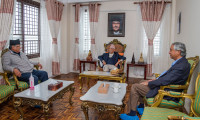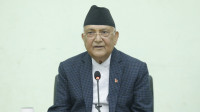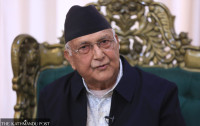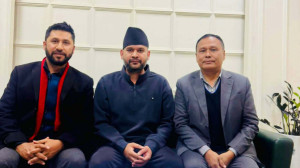Politics
Boundary row and EPG report among others on agenda during Indian foreign secretary's visit
Delhi and Kathmandu officially announced on Monday that Shringla will visit Nepal on November 26-27.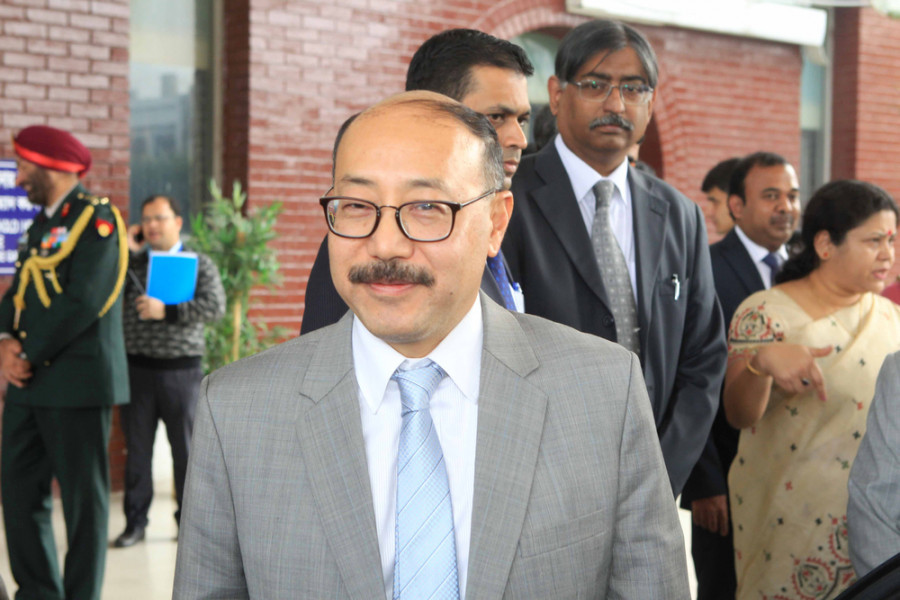
Anil Giri
Indian Foreign Secretary Harsha Bardhan Shringla looks set to return to New Delhi with a heavy briefcase, as Kathmandu prepares its agenda for his two-day visit to Nepal on November 26-27.
Kathmandu and Delhi on Monday afternoon, almost simultaneously, officially announced Shringla’s two-day visit to Nepal.
Foreign Minister Pradeep Gyawali told the Post that all bilateral issues, including those related to boundary, implementation of the report on the Eminent Persons’ Group on Nepal-India relations and early execution of the India-funded projects in Nepal, will be discussed.
Shringla’s is the first visit by a high-level bureaucrat since Nepal-India relations hit a rock bottom back in November 2019 when the Indian government published a new political map of India placing the Kalapani area, which Nepal claims as its own, within Indian borders.
New Delhi ignored Kathmandu’s calls for holding dialogue to address the issue. And again in May, India inaugurated a road link to Kailash Mansarovar in the Tibet Autonomous Region of China via Lipulekh, yet another region that Nepal claims as its own, much to the chagrin of the Oli government. In response, the Oli Cabinet published a new Nepal map which showed Kalapani, Lipulekh and Limpiyadhura as its own territories and then got it subsequently endorsed by Parliament. Delhi called the move Kathmandu’s “cartographic assertion”. India said it was not against talks but they were possible only after the pandemic.
The hope of bilateral engagements faded.
Officials and observers have said Shringla’s visit will add new vigour to Nepal-India relations and help bring the bilateral ties back on track.
“Basically, the Indian foreign secretary’s visit has two dimensions,” Gyawali told the Post. “It will pave the way for more high-level visits and exchanges and set the basis for those upcoming high-level engagements.”
However, the Indian side, officials say, appears to be more keen on discussing the pandemic and ways to respond to it, early supplies of the vaccine, and boosting development partnership and connectivity, including railways, inland waterways and transmission lines.
According to a Nepali official familiar with the possible agenda, the Indian side is less likely to discuss boundary issues on the premise that Shringla’s visit is a “familiarisation trip” aimed at breaking the ice.
A former Indian ambassador to Nepal, however, said Delhi should not hesitate to take up the boundary issues.
“India should hold talks to find ways to resolve boundary issues, especially when Kathmandu has had the new Nepal map endorsed by Parliament,” Ranjit Rae, who served as India’s ambassador to Nepal from 2013 to 2017, told the Post.
On the EPG report, according to Rae, India should explain its stand.
“[India should] also take up the 1950 Treaty at the foreign secretary level talks, since this is the main issue of interest for Nepal in the EPG report,” said Rae. “[India should] also move ahead on Pancheshwar, approve its detailed project report and begin implementation.”
The EPG report has remained a bone of contention, especially for Nepal, as despite the two countries agreeing to the formation of such a group, Delhi has refused to own up the report prepared by it.
Mandated to suggest a new blueprint of Nepal-India ties in the changed global and regional context, Nepal and India had formed the EPG in 2016. It submitted its report in July 2018 with its recommendation to both sides.
Sources say the Indian side has some reservations, particularly on the issue of open border, due to which it has been reluctant to receive it.
The approval of a detailed project report of Pancheshwar Development Authority that is disputed over two decades, is yet to be sorted out. Issues of trade, commerce, widening trade gap with India, cooperation in India funded projects, utilisation of Indian soft loans pledged after the earthquake in Nepal in 2015, cooperation in the field of security and military fields are also high on agenda.
Both sides will take forward and assign the responsibility to the concerned mechanisms, according to Nepali officials.
Shringla’s visit to Nepal follows two recent high-level visits from India–by Manoj Mukunda Naravane, chief of Indian Army, earlier this month and Samant Goel, chief of India’s external intelligence agency, in the third week of October.
“The visit is in continuation of the regular exchange of high level visits between the two friendly neighbours,” said the Foreign Ministry in a statement.
Issuing a statement, India’s Ministry of External Affairs said Shringla’s visit to Nepal, first since he assumed charge, is in keeping with the tradition of regular high-level exchanges between the two countries and the priority India attaches to its relations with Nepal.
“India has historical and civilization linkages with Nepal. In recent years, bilateral cooperation has strengthened, with several major infrastructure and cross-border connectivity projects completed with India’s assistance,” said the ministry. “The visit will be an opportunity to further advance bilateral ties.”
According to the Foreign Ministry, on the first day of the visit, the foreign secretaries of the two countries will hold a bilateral meeting and discuss wide-ranging areas of cooperation between Nepal and India.
“The same day the foreign secretary of India is scheduled to call on the high level dignitaries of Nepal,” said the Foreign Ministry in a statement. “He will also hand over Covid-19-related support to the government of Nepal.”




 16.2°C Kathmandu
16.2°C Kathmandu
